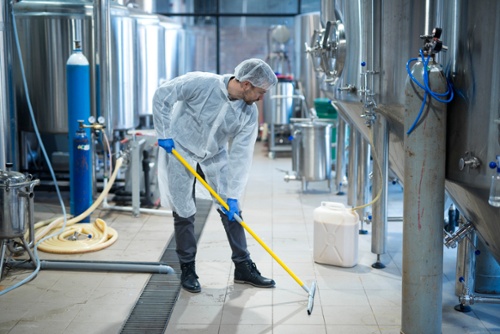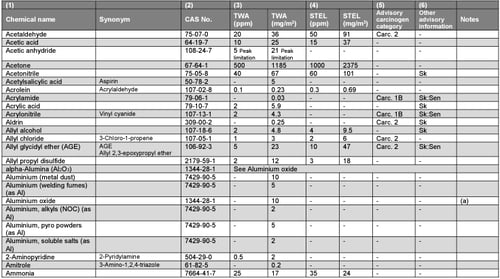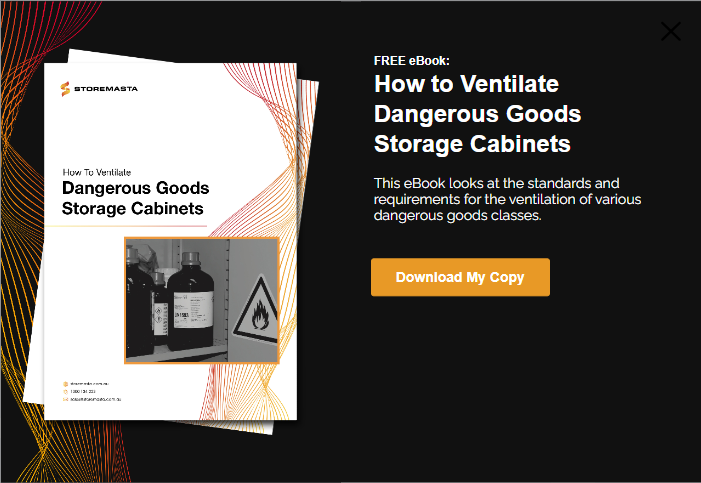Working with hazardous chemicals and dangerous goods is common in workplaces right across Australia. However, there often isn’t enough consideration given to the issue of airborne contaminants. To maintain the health and safety of personnel, workplaces have an obligation under WHS Regulations to maintain the legal limits of airborne contaminants. But what is a workplace exposure limit — and how can you ensure that your workplace complies with it? In this post, we'll take a closer look at Safe Work Australia’s workplace exposure standards, so you can gain a better understanding of the exposure level for airborne contaminants – and maintain a compliant working environment.
What is a Workplace Exposure Limit?
Safe Work Australia has developed the workplace exposure standards for airborne contaminants to assist workplaces who use and carry hazardous chemicals to maintain the health and safety of their staff.
The workplace exposure standards – otherwise known as WES – is a comprehensive list of substances and mixtures that have a maximum exposure limit associated with them.
In simple terms, if the chemicals or substances that you hold onsite appear in this list, then you must monitor the level of airborne contaminants in your organisation — and adhere to the workplace exposure limits that are listed.
These workplace standards were adopted in 1995, however, the standards are under review due to the continuing advances in toxicology as well as the recommendations for airborne hazardous chemicals. The standards in place are the result of the latest evidence and scientific research.
IMPORTANT: Always refer to the latest workplace exposure standard for up-to-date information on the current legal limits for hazardous chemicals that you have at your work site.
How Can Airborne Contaminants Affect Staff?
There are multiple ways that hazardous chemicals can adversely affect staff if they are exposed to them through unsafe levels of airborne contaminants.
The hazards associated with higher limits of airborne chemicals are determined by the type of chemical that you’re carrying, as well as the extent of the exposure and the hazards associated with that substance.
Find out more about cabinet ventilation
Chemical exposure can occur through ingestion, absorption or inhalation. However, when dealing with airborne contaminants, there is the risk of exposure through inhalation as well as chemical absorption through the skin.
Hazardous substances or mixtures that can be inhaled may include gases, vapours, fumes and dusts.
The health effects from exposure to harmful chemicals can include short and long-term health effects – from headaches or nausea to cancer and reproductive issues.

Staff may be adversely affected by gases, vapours, fumes or dusts.
There are also further considerations within the workplace exposure standards for issues including:
- Skin and respiratory sensitization
- Carcinogenicity of chemicals
- Ability for the airborne chemicals to pass into the body
To create a healthy and safe environment for your team to work in, you must be able to maintain the legal limits as per the workplace exposure standards. This is in addition to controlling any other chemical hazards or chemical exposure issues that are present in your organisation.
What Chemicals are on the List?
As we mentioned earlier, the exposure list is an extensive list of hazardous chemicals and their legal limits for airborne contaminants. Currently, there are around 700 substances and mixtures listed in the exposure standards.
The standards include information about mixtures and substances (across a range of dangerous goods classes), as well as specific groups of substances such as neurotoxins, irritants, sensitisers and ototoxic chemicals.
An example of some of the chemicals found in the current WES is shown below:

This list may be updated when there is evidence to prove that further substances or mixtures pose a risk to health and safety.
REMEMBER: It’s your duty to ensure that staff aren’t exposed to health and safety risks. You must aim to eliminate or minimise the risks so far as it is reasonably practicable for your business. These are your basic duties under WHS Regulations and law.
Conducting Air Monitoring
Workplaces with hazardous substances listed in the workplace standards have obligations under WHS Regulations. These include, but are not limited to:
- Keeping staff safe from exposure to substances or mixtures in airborne concentrations that exceed the legal limits
- Conducting air monitoring to determine airborne concentration
- Recording and keeping the results of air monitoring (must be kept for 30 years after the date the record is made)
- Ensuring air monitoring results are readily accessible to staff who may be exposed to the substance or mixture
Air monitoring programs should be developed and implemented in consultation with personnel who have specialist knowledge and experience. This is because of the complexity involved with the interpretation of air monitoring results.
We recommend consulting with an expert in air monitoring, such as a qualified occupational hygienist (see aioh.org.au), to ensure that the program is developed, conducted and interpreted in the correct manner.
Air monitoring should be scheduled when regular work activities are taking place and should last for a day or more. ‘Personal monitoring’ is when a staff member’s exposure to airborne contaminants (within the breathing zone of the worker) is measured. This process involves the staff member wearing a respirator – and air samples being taken with a sampling device, such as a collection tube or special meter.
Interpreting the Exposure Standards
The 3 types of exposure standard which are listed in the workplace exposure standards for airborne contaminants are:
- TWA: 8-hour time-weighted average
- STEL: short term exposure limit
- Peak limitation
TWA is the most common type of exposure standard and is the average airborne concentration of the substances over an 8-hour working day within a 5-day week.
The STEL is the time-weighted maximum average airborne concentration of the substance over a 15-minute period. STELs are used as supplements to the TWA exposure standards. The STEL enables organisations to minimise risks such as intolerable irritation, irreversible tissue change and narcosis (which could precipitate dangerous workplace incidents).

Organisations must test, monitor and control airborne contaminants to meet the workplace exposure limits.
Peak limitation exposure standards are the peak airborne concentration of the substance over the shortest period of time, which doesn’t exceed 15 minutes. If substances act rapidly, the measuring of airborne concentration over the 8-hour period isn’t deemed appropriate. These chemicals may result in acute effects after relatively brief periods of exposure due to the high concentration of contaminants.
What is the ‘Critical Effect’?
The critical effect is a workplace exposure standard value. It’s founded on the adverse effect of the lowest airborne concentration of a specific hazardous chemical.
This value is determined by three key parameters:
- The critical effect does not exceed 15 minutes of exposure (known as peak limitation)
- Effect on the staff member is chronic or sub-chronic, measured over an 8 hour time weighted average. This means an average exposure in any 8 hour shift across a standard 40 hour week
- If the critical effect within short term exposure is short term (minor) or acute (serious)
Identifying Immediate Danger
If the chemicals that you have onsite have a parameter set as immediately dangerous to life or health, this means that the concentration may cause harm including:
- Fatalities due to chemical exposure
- Immediate or delayed permanent adverse health effects
- Impeding the staff member’s escape from the environment
The immediately dangerous to life or health parameter (IDLH) was developed by the US National Institute for Occupational Safety and Health. While IDLH is not regarded as an exposure limit, your organisation must gain further safety information if you’re dealing with that substance in confined spaces — or facing an uncontrolled release or industrial accident.
Concerned about exposure from spills?
Access our guide to chemical bunding
Keeping Airborne Contaminant Levels as Low as Possible
While the exposure standards establish a statutory maximum upper limit of exposure to airborne contaminants, they should not be considered the only means of determining a healthy or unhealthy working environment. There are many factors which can affect the health of staff, including the susceptibilities of the individual exposed to the chemical.
The level of airborne concentration of a hazardous substance or mixture should be kept as low as possible to reduce the risk of adverse health effects. As per the Hierarchy of Control, you should first aim to completely eliminate the hazard — before considering the ways in which to minimise chemical exposure to airborne contaminants.
Workplace Exposure Limits Explained
Creating a air monitoring program, in consultation with industry experts, is essential for the precise monitoring, anaylising and controlling of airborne contaminants in the workplace. While exposure to hazardous substances can be controlled through elimination, substitution, engineering and administrative controls, you must continue monitoring concentration levels to maintain safety and compliance.
One way to achieve a lower level of airborne contaminants, is with the installation of mechanical ventilation on your indoor safety cabinets. However, determining whether this control is required for your operations is not always a simple task. To find out more about ventilating cabinets, you can access our free eBook. We’ll run you through the considerations your organisation will have to make when deciding whether or not to ventilate your indoor safety cabinets. Grab your copy for free today and create a safer working environment for your team.
Like to learn more about workplace exposure standards?
Read our related posts:
A Quick Guide to Complying with Chemical Exposure Standards in Australia
How to Estimate the Level of Exposure of your Workers to Hazardous Chemicals
Joining the team as a Dangerous Goods Storage Consultant, Melissa Hampton became Storemasta's Marketing Manager in late 2021. With extensive knowledge and experience in chemical compliance, Melissa is responsible for leading the Marketing team and helping shape their marketing strategy. In her spare time, you can find Melissa hiking, swimming and enjoying the great outdoors in beautiful north-west Tasmania.
